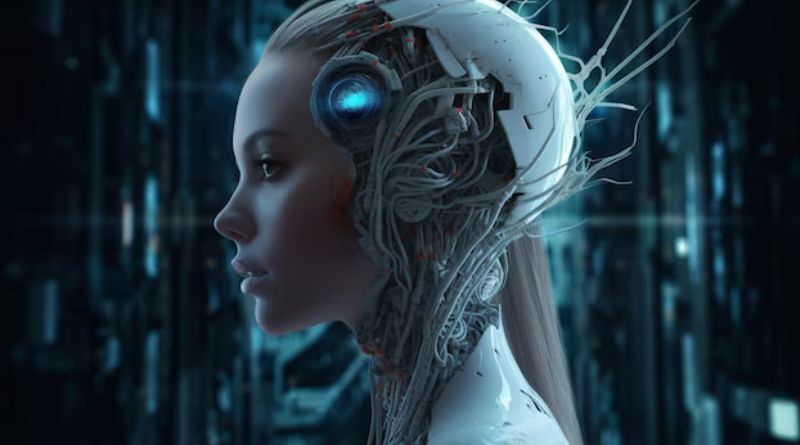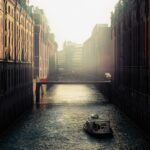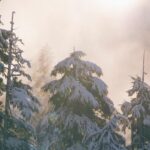With the speedy improvements in artificial intelligence (AI), it is no surprise that people are keen to explore the capability of AI-driven photograph era. AI photograph mills have converted innovative industries, presenting artists, designers, and content creators with tools that could turn a simple textual content prompt right into a stunning visual masterpiece. In this article, we are able to walk you via the stairs of creating your own AI photograph generator, exploring the technologies at the back of it, the tools you want, and the key concerns for building a a success version.
Understanding the Basics of AI Image Generation
At the coronary heart of AI photo era lies deep mastering, a subset of system studying where algorithms are educated to understand styles, structure, and capabilities in data. Specifically, AI photo mills often use a type of deep getting to know version known as a generative hostile network (GAN) or transformer fashions, like DALL·E, to produce snap shots from text activates.
GANs: GANs include parts: a generator and a discriminator. The generator creates new images, while the discriminator evaluates them. The two components work together in a loop, refining the images till they look practical and meet precise criteria.
Transformer Models: These models, inclusive of OpenAI’s DALL·E and Stable Diffusion, are based totally on transformer structure which could process and generate snap shots from textual descriptions, permitting users to provide photographs by using sincerely providing written activates.
Tools and Frameworks You Need
Building an To create your gen AI image generator requires some technical information, however thanks to the proliferation of accessible gear, frameworks, and resources, it is extra feasible than ever. Here are the most common gear and frameworks which you’ll need.
Programming Languages: Python is the most widely used language for AI version improvement due to its simplicity and wealthy ecosystem of machine mastering libraries.
Machine Learning Frameworks
TensorFlow: An open-supply platform for machine learning, frequently used to build neural networks, along with GANs and deep mastering fashions.
PyTorch: Another popular deep getting to know framework, known for its flexibility and dynamic computational graph, ideal for education custom models.
Keras: A high-degree neural networks API that runs on top of TensorFlow and simplifies version building and experimentation.
Pre-trained Models: If you don’t need to begin from scratch, you can leverage pre-trained models. Open-supply fashions like Stable Diffusion, DALL·E 2, and VQ-VAE provide pre-educated architectures that can be best-tuned for your unique use case.
Cloud Computing Platforms: Training AI models can be aid-extensive, so structures like Google Cloud, Amazon Web Services (AWS), and Microsoft Azure offer scalable compute sources (GPUs/TPUs) that could manage the heavy lifting.
Data Collection and Preparation
A key step in constructing any AI machine is accumulating and getting ready the facts. In the case of an image generator, the records you want consists of snap shots paired with textual descriptions. This pairing lets in the model to examine the relationships between textual activates and visual content.
Datasets: Some extensively used photograph-text datasets encompass.
COCO (Common Objects in Context): A big dataset that consists of images along side descriptions, item annotations, and more.
LAION-400M: A dataset with over 400 million picture-textual content pairs used for education textual content-to-photo fashions.
Flickr30k: Another famous dataset such as snap shots with associated captions.
Data Preprocessing: To educate an AI photo generator successfully, the information wishes to be preprocessed. This could involve resizing images, normalizing pixel values, and tokenizing textual content to ensure that the model can correctly system and study from the facts.
Model Architecture Selection
Once the facts is ready, it’s time to pick out the version architecture. The maximum commonplace models for AI photo technology are primarily based on GANs or transformer-based models. You may keep in mind.
GAN-primarily based Models: These are ideal in case you want to create a model from scratch. Some famous GANs for picture technology consist of StyleGAN and BigGAN.
Transformer-based Models: These fashions, consisting of DALL·E and CLIP (Contrastive Language-Image Pretraining), generate photos by using interpreting textual descriptions. These fashions have emerge as greater distinguished due to their ability to generate first rate and diverse pictures from text activates.
Variational Autoencoders (VAEs): These models are good for producing images that require extra controlled and interpretable features. They help you research latent variables that represent excessive-level functions of the photos.
Training the Model
Training your photograph generation model can take everywhere from a few hours to weeks relying on the complexity and length of your dataset, as well as the computational strength available.
Model Training Process
Begin with the aid of feeding the prepared image-text pairs into your selected model.
Monitor the loss features, which includes imply squared blunders (MSE) for GANs, to assess the model’s development.
You may need to test with hyperparameters like learning rate, batch length, and the number of epochs to discover the most efficient schooling configuration.
Optimization: During the training system, the generator creates pix, and the discriminator (in GANs) or the attention mechanisms (in transformers) refine them. You’ll want to constantly adjust your version to enhance its overall performance.
Fine-tuning and Customization
Once your AI version is trained, you could quality-track it to generate pics for particular domains or styles. Fine-tuning includes adjusting the version to carry out well on precise varieties of activates or records which are precise in your use case. For instance, you can fine-tune your image generator to specialise in creating summary artwork, practical graphics, or fable landscapes.
Style Transfer: Using techniques like neural fashion transfer, you could inject particular creative patterns into the generated photos, permitting your generator to imitate unique artists or artwork movements.
Deploying the AI Image Generator
After your AI photograph generator is ready, you could set up it via an API or combine it right into a user interface (UI). Common deployment strategies encompass.
Web Application: Build a simple UI in which customers can input textual content activates and think about generated pics. You can use the front-end frameworks like React or Vue.Js alongside lower back-stop offerings which includes Flask or Django.
Cloud Deployment: You can also host your model on a cloud provider, such as Heroku, AWS, or Google Cloud, making it available to users round the sector.
Integration with Other Tools: Some developers combine AI picture mills with different creative tools or structures, permitting customers to effortlessly generate content material without delay inside famous design equipment like Adobe Photoshop or Figma.
Ethical Considerations and Legal Issues
When growing an AI image generator, it’s important to consider the moral implications.
Copyright Issues: AI-generated pictures can inadvertently reflect copyrighted works or patterns, main to prison disputes.
Bias in Data: AI fashions can give a boost to biases if trained on biased datasets. Ensure that your dataset is diverse and inclusive.
Misuse of Technology: AI-generated content material may be misused to create deceptive or harmful pics. Consider implementing safeguards to prevent the generation of irrelevant content.
Conclusion
Building your personal AI photograph generator is a challenging but rewarding project that requires an understanding of gadget studying strategies, get right of entry to to datasets, and computational assets. By following the stairs outlined above, you may create a effective tool that generates splendid pix from text activates, opening up countless possibilities for creativity and innovation. Whether you’re an artist, a developer, or a enterprise looking to leverage AI for your products, this guide affords the inspiration to get started for your AI picture era journey.





